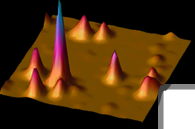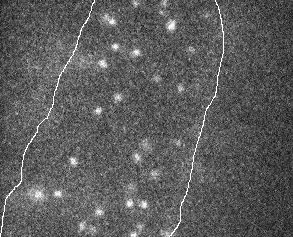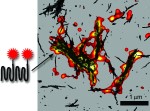Research
Single-Molecule Spectroscopy and Tracking, Superresolution Imaging, and Trapping of Single Biomolecules and Photosynthetic Proteins
Executive Summary:
The Moerner Laboratory utilizes laser spectroscopy and microscopy of single molecules to probe biological processes, one biomolecule at a time. Primary thrusts include development and application of fluorescence microscopy far beyond the optical diffraction limit by PALM/STORM and STED approaches, invention and validation of methods for precise and accurate 3D optical microscopy in cells, and trapping of single biomolecules in solution for extended study. These approaches are applied to explore protein localization patterns in bacteria, to measure structures of amyloid aggregates in cells, to define the behavior of signaling proteins in the primary cilium, to quantify photodynamics for photosynthetic proteins and enzymes, and to observe the dynamics of DNA and RNA in cells and viruses.
Click on any image below for more information. For Single Molecule Movies, [click here]! For Affiliations/Centers, scroll down.
Affiliations/Centers
Stanford Photonics Research Center
Molecular Imaging Program at Stanford
The Bio-X Program at Stanford University ![]()
Research Support
In recent years, this research has been supported in part by the following organizations, to whom we are grateful!
- The National Institute of General Medical Sciences, National Institutes of Health
- The Department of Energy, Office of Basic Energy Sciences













